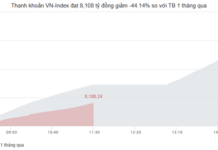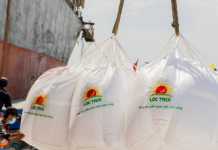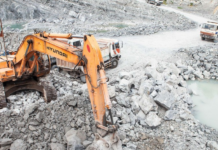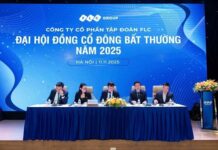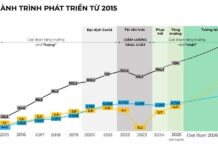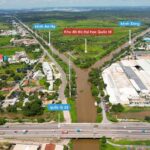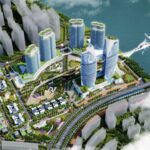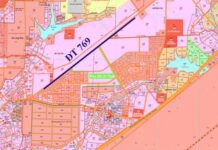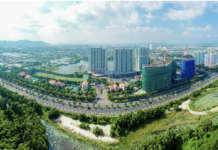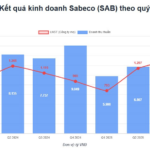Despite the Hanoi real estate market showing signs of recovery in the first half of 2025, with improved supply, prices remain at a high level. Regarding this issue, Ms. Do Thu Hang, Senior Director of Research & Consulting Services at Savills Hanoi, shares insights into the factors shaping the current housing market and its prospects for the future.

Ms. Do Thu Hang, Senior Director of Research & Consulting Services, Savills Hanoi
What are the barriers preventing the housing supply from truly booming?
Key laws on land, housing, and real estate business have been enacted and took effect from August 2024. However, to apply them comprehensively and effectively in practice, time is needed for the issuance of complete guidelines and specific implementation.
Currently, many projects are in the process of finalizing legal procedures, design approvals, and financial obligations. These steps require time to ensure transparency and adherence to procedures. Although the pace has been accelerated, there is still a lag before the supply can truly enter the market.
What are your forecasts for the housing supply and price trends in Hanoi in the coming period?
In the second half of 2025, we forecast that approximately 11,500 apartments will be launched in Hanoi, primarily in the A and B segments. Product diversification remains limited.
From 2026 onwards, as pilot projects complete legal procedures, new supply will increase significantly. It is projected that during 2026–2027, the Hanoi market will welcome around 46,600 apartments from 43 projects, mostly located outside the central area. This could create pressure for price adjustments, but I believe adjustments will only occur in areas with abundant land and inadequate infrastructure.
For projects in strategic locations, within the Ring Road 2 – Ring Road 3 area, developed by reputable investors, prices are likely to remain stable or increase slightly due to scarcity and real demand. Overall, instead of a market-wide price drop, we will witness a clear differentiation by area and project quality.

What solutions are needed to both improve the housing supply and bring prices to levels affordable for residents?
Overall, Hanoi is implementing synchronized solutions: institutional reform, infrastructure development, and pilot housing projects. Notably, many projects are being considered for implementation outside the Ring Road 3 – 3.5 area. Once procedures are completed and products are launched, this will positively impact price levels.
However, a critical factor is land use costs, which currently account for a large proportion of total costs. If these costs are calculated reasonably, ensuring a balance of interests between the state and businesses, housing prices could decrease to levels more affordable for residents. Additionally, tax, credit, and land incentives for affordable housing are essential to promote the development of this product segment.
Foreign investors show interest in residential real estate, but FDI in this segment has not yet boomed. Why, and what is needed to attract FDI more effectively?
Vietnam’s fundamental factors are very attractive to foreign investors, including a young population, rapid urbanization, rising incomes, and positive economic prospects. Savills’ observations show that foreign direct investment (FDI) in residential real estate has a noticeable presence in Hanoi, Ho Chi Minh City, Hai Phong, and others.
However, to boost FDI in the housing segment, licensing and project approval processes need to be shortened and made more transparent. The speed of investment procedures is the biggest competitive advantage to retain and attract international capital.
How might Hanoi’s push to develop public transport and restrict personal vehicles in the inner city impact the real estate market, especially in the central area?
This is an overall urban transformation process. When policies regulating personal vehicles are implemented, they will certainly affect access to central areas. However, this does not mean there will be a direct negative impact on the real estate market.
The essence of real estate is tied to usage needs, and housing is always an essential need. Even if travel methods change, people will still find ways to access necessary areas through various options.
Currently, the market is in an observation and analysis phase regarding the impact of infrastructure and transportation changes. According to Savills’ assessment, in areas like the Old Quarter, if effectively directed and exploited for purposes such as tourism and commerce, real estate value can be maintained or even increased.
As for housing demand, as mentioned, it remains high in major cities like Hanoi. Therefore, even with changes in transportation methods, the real estate market has a self-adjusting and adaptive mechanism to serve this demand. However, as this is a complex process with many related factors, we believe continued monitoring and evaluation are needed, rather than drawing early conclusions about the direct impact on real estate value at this time.
Prominent Transport Firm Ventures into Urban Development, Plans Automotive Manufacturing Hub in Vietnam’s Youngest Centrally Governed City
One of our key collaborative initiatives involves researching and proposing urban development projects, implementing monorail systems, and advancing integrated automotive manufacturing and ancillary industrial complexes.
Southern Real Estate Embraces Airport Corridor Urban Development
The development of Long Thanh Airport, metro lines, highways, and ring roads is reshaping Ho Chi Minh City’s urban landscape, propelling growth in satellite markets centered around integrated urban complexes, according to Dr. Nguyen Tri Hieu, a leading banking and finance expert.

